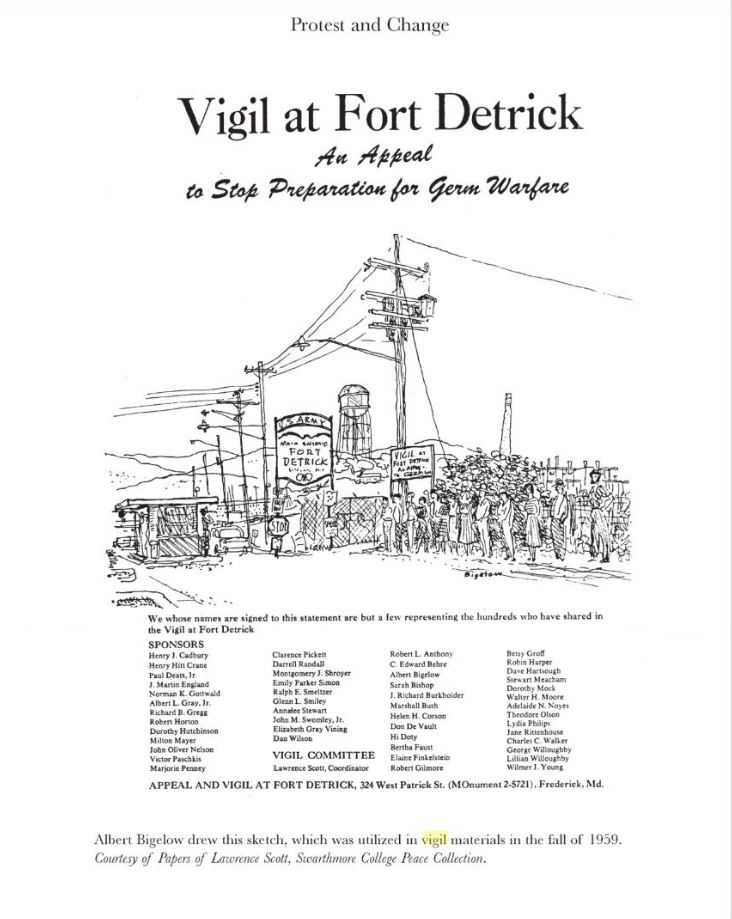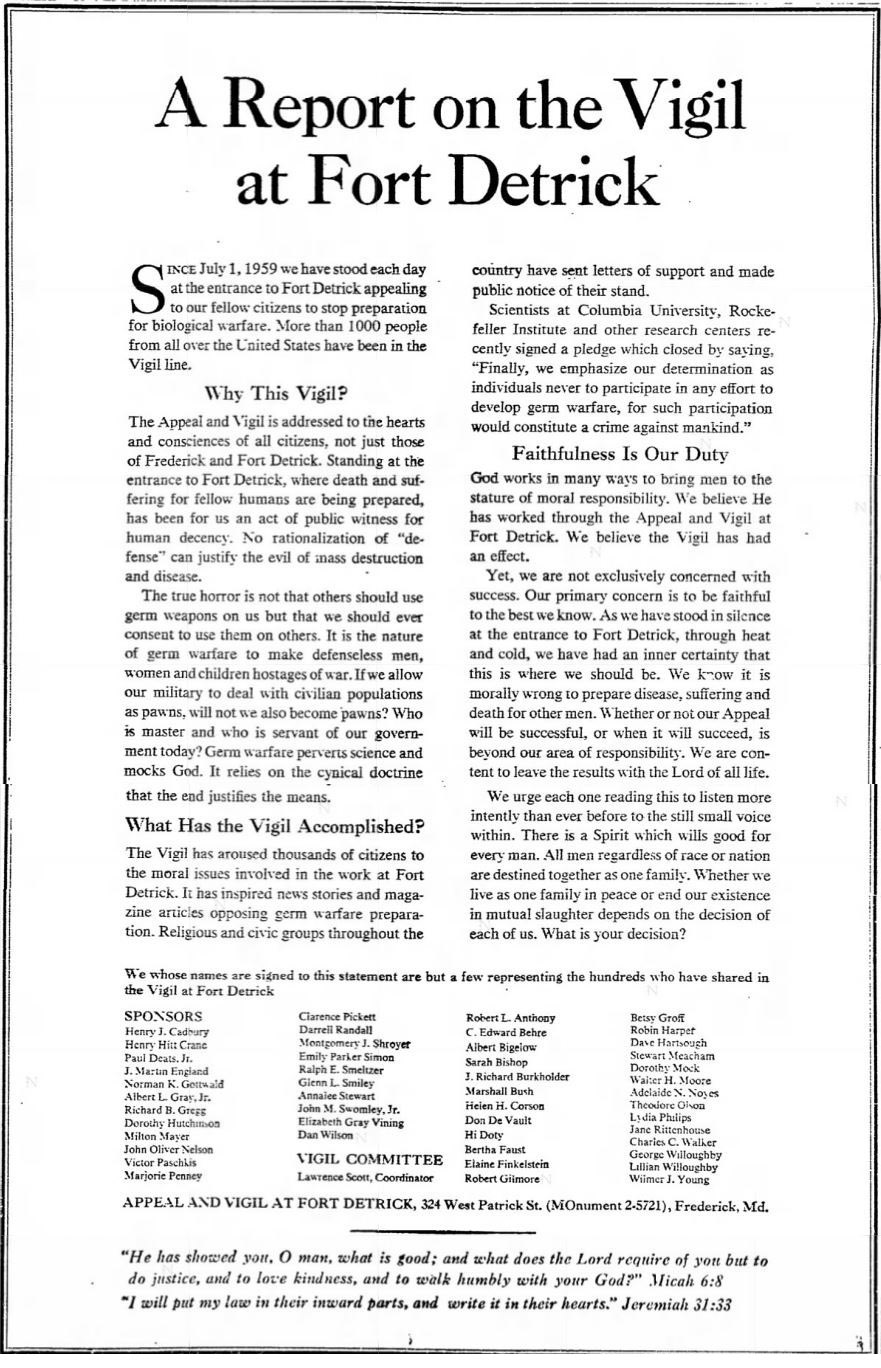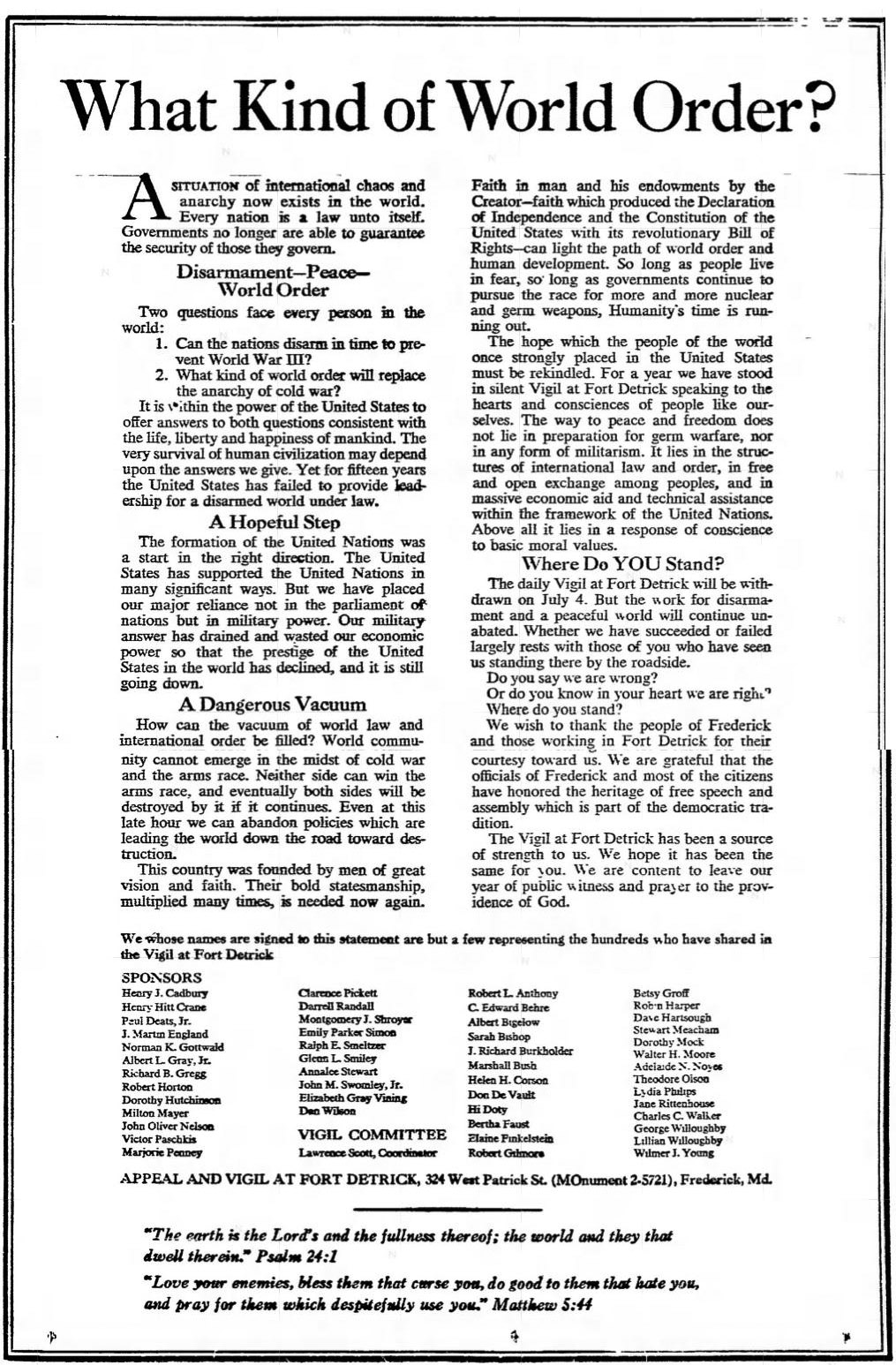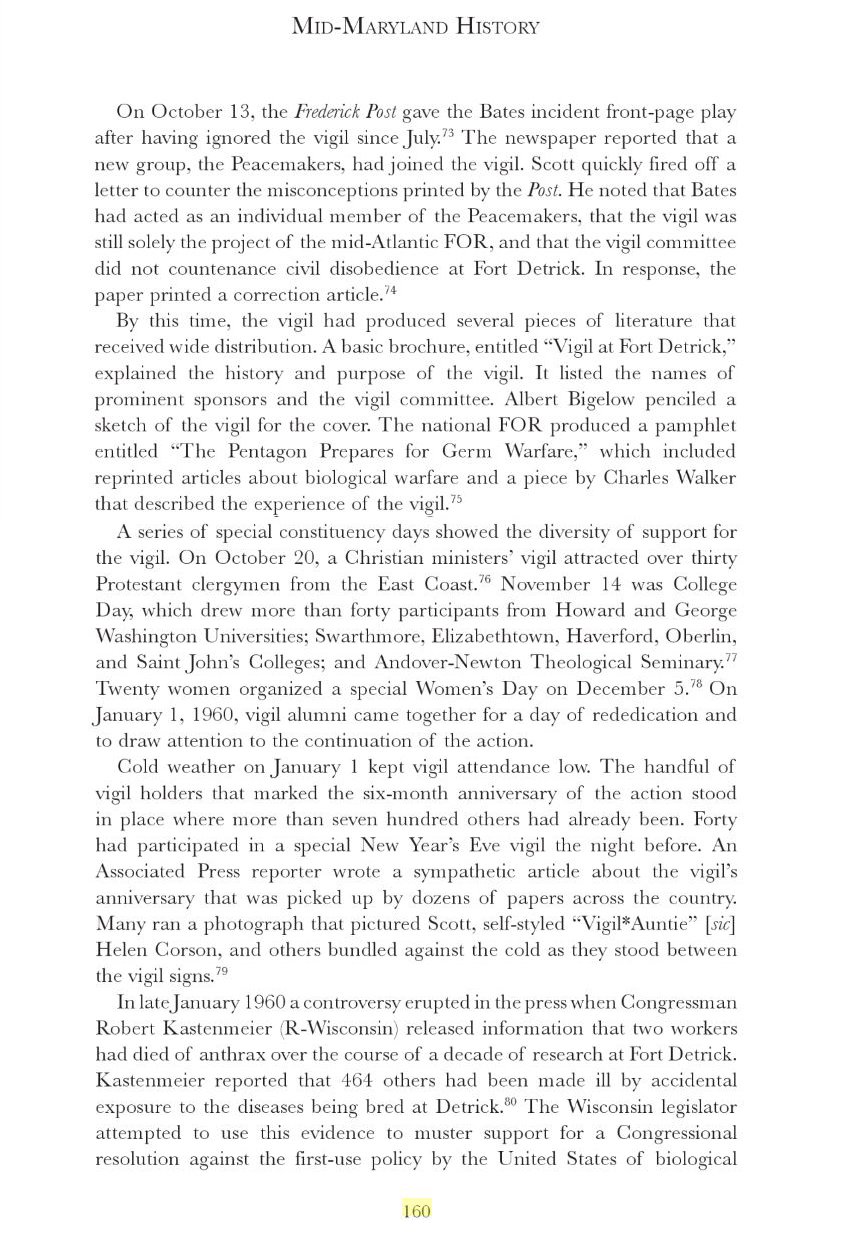It is impossible to know what effect the Vigil at Detrick had on public opinion and government policy. This article from PBS, Nixon Ends Biological Weapons Program, describes the remarkable change that occured in the 15 years following the Vigil at Detrick:
"In November 1969, President Richard Nixon surprised the American public, and the world, by ordering the United States to unilaterally discontinue its biological weapons program, thus ending further research into their development. Though this decision came as a shock to many who operated the offensive biological warfare program at Fort Detrick, Pine Bluff Arsenal, Dugway Proving Ground, and elsewhere, its seeds had been planted years earlier."
"The Biological Weapons Convention"
"Whatever Nixon’s motivations, his decision had the desired international effect. Negotiations on a treaty banning all biological weapons intensified, and after the Soviet Union dropped its opposition, in April 1972 the Biological Weapons Convention was completed and became open for signature by the nations of the world. The U.S. Senate ratified the convention in December 1974, and it went into effect in March 1975, the same year the Senate also finally ratified the 1925 Geneva Protocol banning the wartime use of bacteriological weapons. The Biological Weapons Convention was a historic accomplishment, not merely restricting biological weapons but pledging their complete elimination. Unfortunately, one of its key signatories, the Soviet Union, continued a secret biological weapons program in direct violation of the treaty’s terms, a fact that would only become known years later."
|




